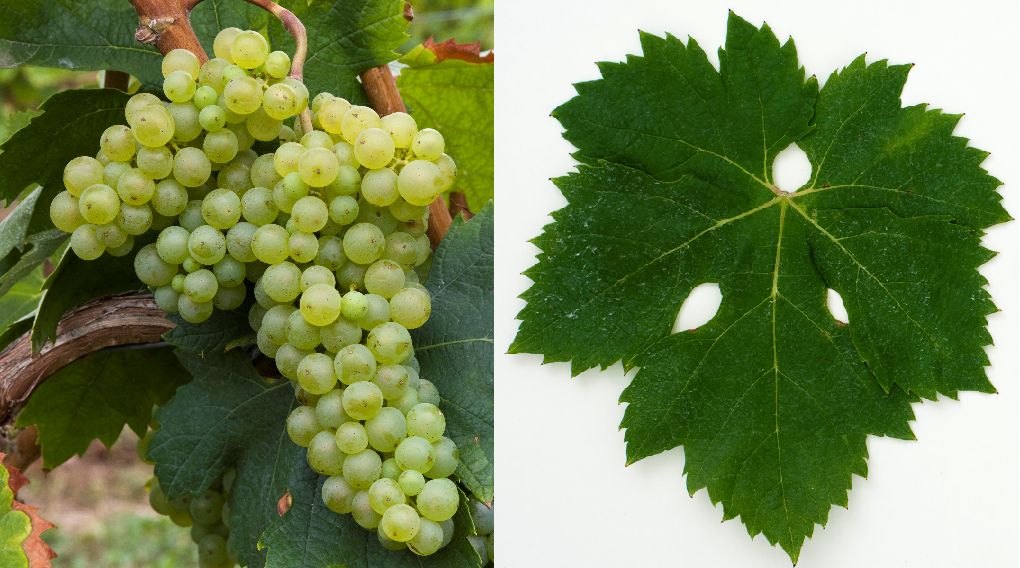The white grape variety originates from Italy. There are 75 synonyms that indicate the vine's great age. Some of them grouped alphabetically by country are (in bold the other main names) Paulos, Pavlos (Greece); Arcadino, Fresia, Malvasia Bianca, Malvasia Bianca del Polino, Malvasia Bianca Siciliana, Malvasia Bianca di Bari, Malvasia Bianca di Basilicata, Malvasia Bianca Toscana, Malvasia Cannilunga di Novoli, Malvasia del Chianti, Malvasia di Arezzo, Malvasia di Brolio, Malvasia di San Nicandro, Malvasia Lunga, Malvasia Toscana, Malvasia Verace, Prosecco Nostrano, Prosecco Nostrano di Conegliano, Racina du Monacu Bianca, Tundulillu, Uva Antica (Italy); Kacabelic, Krizol, Krizol Bijeli, Maraškin, Maraštin, Maraština, Maraština Bijela, Maraština Krupna, Maraština Mala, Mareština, Mareština Modra, Rukac, Rukatac, Rukatica, Višana (Croatia); Menuetta (Slovenia). It is one of the numerous varieties with the name part Malvasia (see there). It has been known in Tuscany for several centuries. In Bettino Ricasoli's (1809-1880) first recipe of 1872, it was suggested as an additive for simpler Chianti, but discouraged for storable wines.

Despite seemingly suggestive synonyms or morphological similarities, it should not be confused with the varieties Glera (Prosecco), Malvasia Bianca di Basilicata, Malvasia Bianca di Piemonte, Malvasía de Lanzarote or Prosecco Lungo. According to DNA analyses carried out in 2007, it is genetically closely related to the varieties Malvasia di Lipari and Malvazija Istarska. Two direct descendants from presumably natural crossings are Malvasia Nera di Brindisi (with Negroamaro), and Vitovska (with Glera). The medium to late ripening vine is susceptible to fungal diseases such as powdery and downy mildew, botrytis and grape rot. It produces neutral, alcohol-rich white wines.
The variety is cultivated in Italy in all provinces of Tuscany; there are further areas in Apulia, Lazio, Marche and Umbria. It is present there in the DOC/DOCG wines Bianchello del Metauro, Bianco Capena, Bianco dell'Empolese, Cacc'e Mmitte di Lucera, Carmignano, Colli Altotiberini, Colli dell'Etruria Centrale, Colline Lucchesi, Gravina, Leverano, Orcia, Orvieto, San Gimignano, Sant'Antimo, San Torpè, Terra d'Otranto, Val d'Arbia, Valdinievole, Vignanello and Vin Santo del Chianti. The Italian cultivated area is 1,246 hectares. In Croatia, it is mostly cultivated under the names Maraština or Rukatac in the coastal area and on the two islands of Korčula and Lastovo, where it is used, among other things, for the dessert wine Prošek. However, no stands were recorded (in 2010 there were still 285 ha). There is also a tiny stand of 0.2 hectares in Brazil. In 2016, a total of 1,247 hectares of vines were recorded (Kym Anderson).
Source: Wine Grapes / J. Robinson, J. Harding, J. Vouillamoz / Penguin Books Ltd. 2012
Images: Ursula Brühl, Doris Schneider, Julius Kühn-Institut (JKI)
Voices of our members

For me, Lexicon from wein.plus is the most comprehensive and best source of information about wine currently available.
Egon Mark
Diplom-Sommelier, Weinakademiker und Weinberater, Volders (Österreich)